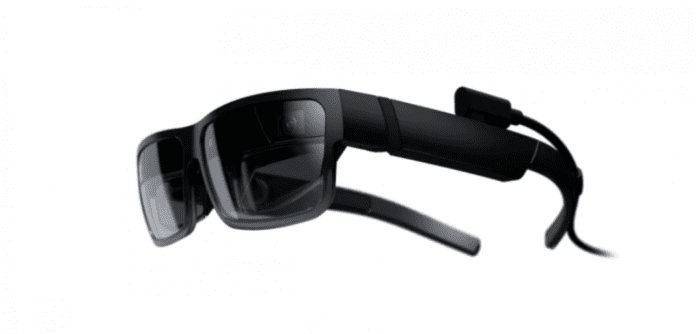The Lenovo AR glasses are equipped with Qualcomm’s Snadragon XR1 platform
While we might not have gathered in Los Vegas for this year’s CES, companies didn’t miss a beat when it came to announcing and showcasing their latest products and solutions. Lenovo used CES 2021 as the backdrop for revealing a number of new products, one of which is the ThinkReality A3 glasses, a set of lightweight augmented reality (AR) glasses for the enterprise space.
Lenovo’s previous model, the A6, is already a prominent player in enterprise XR, but the A3, according to the company’s Commercial AR/VR Lead Nathan Pettyjohn and the Senior Hardware Product Manager for Commercial AR/VR Mike Lohse, is a complete redesign.
For starters, the latest glasses are equipped with Qualcomm’s Snadragon XR1 platform, which is the chip manufacturer’s first dedicated eXtended reality (XR) platform.
“This allows us to provide a consistent tracking experience across all platform, whether plugged into a phone or a PC,” Lohse told RCR Wireless News.
Pettyjohn emphasized the importance of the product’s ability to connect to a PC, laptop or a phone via a USB-C cable, highlighting the criticality that “the mobile phone is now ready to power these AR glasses.”
The previous design required a mini compute pack that limited where and how the device could be used.
“Now, we can leverage all the value of the Motorola phone and the processors in that. This also makes it more versatile,” explained Pettyjohn. “As the 5G ecosystem starts to emerge, we can be at the forefront of this for those customers who want a private campus network inside of a warehouse or want to be out in the field where there is 5G, or even 4G.”
And because Motorola was acquired by Lenovo in 2014, the company is now in a position to offer end-to-end hardware for the ThinkReality platform for either a PC or mobile use case.
“We can really own the end-to-end experience [and] I think that really allows us a lot of advantages that other companies […] may not have,” continued Pettyjohn. “Attaching to a Motorola phone is going to be very interesting to us. Having cellular connectivity allows [users to go] outside of the Wi-Fi bubble.”
Another characteristic both Pettyjohn and Lohse focused the conversation around is the AR glasses’ high level of customization, thanks to its modular design, which allows for adjustments like inserting prescription lenses or removing the nose bridge.
However, comfort and personal fit is only one way in which the glasses are customizable. Due to other features, like a removable front frame that can be replaces with a more industrial frame that provides better eye protection, the glasses are adaptable to different use cases and environment as well.
“It’s a very versatile platform,” commented Lohse, “from comfort, to use and to what it is able to plug into.”
When used in an office setting, the glasses are very straightforward. They plug into a PC just as any other monitor would and then provides the wearer with virtual displays. The only input necessary is the mouse and keyboard.
Lohse and Pettyjohn admitted that, because of the devices ability to deliver a private and flexible office experience, Lenovo was initially eyeing businesses travelers and co-working spaces for the product, but when COVID-19 struck, that plan was flipped on its head.
Lohse is confident, though, that even in our current work from home environment there is still value in the AR glasses when it comes to office work.
“Not everyone has the space to set up multiple monitors at their kitchen table,” he reasoned. “These provide that flexible solution that doesn’t take up a lot of space.”

